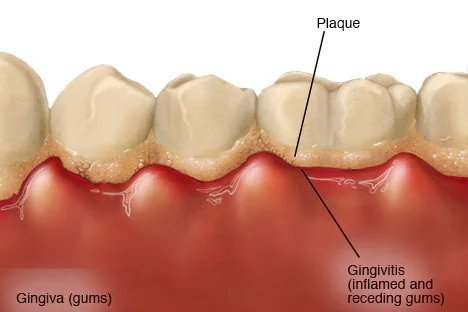Your Partner in Dental Wellness
Gingival Diseases

Understanding Gingival Diseases: Causes, Symptoms, and Treatment
What are Gingival Diseases?
Gingival diseases refer to a group of conditions that affect the gums, also known as gingiva. The gums play a crucial role in oral health by providing a protective barrier for the underlying bone and supporting the teeth. Gingival diseases primarily involve inflammation and infection of the gums, and if left untreated, they can progress to more serious forms of periodontal disease.


Types of Gingival Diseases
- Red, swollen gums
- Bleeding while brushing or flossing
- Bad breath
- Tenderness in the gums
- Gums that pull away from the teeth
- Tooth mobility or looseness
- Pus between the teeth and gums
- Persistent bad breath or a bad taste in the mouth
- Pain or discomfort when chewing
- Professional Cleaning: A dentist will remove plaque and tartar buildup from your teeth and gums through a process called scaling.
- Improved Oral Hygiene: Brushing at least twice a day, flossing daily, and using an antimicrobial mouthwash can help control plaque buildup.
- Lifestyle Changes: Quitting smoking, improving your diet, and managing underlying health conditions can reduce the risk of gingivitis.
- Scaling and Root Planing: This deep cleaning procedure removes plaque and tartar from the surfaces of the teeth and beneath the gumline. Root planing smooths the roots of the teeth, allowing the gums to reattach to the teeth.
- Medications: Antibiotics may be prescribed to reduce infection and inflammation, either in the form of oral medication or localized treatment in the gums.
- Surgical Treatment: In advanced cases of periodontitis, surgical options such as flap surgery (to reduce pocket depths) or bone grafting (to replace lost bone) may be necessary.
- Brush and Floss Regularly: Brush your teeth at least twice a day with fluoride toothpaste and floss daily to remove plaque from between your teeth.
- Visit Your Dentist Regularly: Regular dental check-ups (every six months or as recommended) can help catch gingival diseases early and allow for prompt treatment.
- Avoid Tobacco Products: Smoking increases the risk of gum disease by reducing blood flow to the gums and making it harder for the body to fight infections.
- Eat a Balanced Diet: A diet rich in fruits, vegetables, and nutrients like vitamin C can help maintain healthy gums.
- Stay Hydrated: Drinking water helps maintain saliva flow, which is important for neutralizing acids and washing away food particles and bacteria.
Gingival diseases are common but treatable conditions that affect many people worldwide. Whether it’s gingivitis or the more severe periodontitis, early detection and intervention are key to preventing long-term damage to your oral health. By practicing good oral hygiene, seeking professional dental care regularly, and adopting a healthy lifestyle, you can significantly reduce your risk of gingival diseases and maintain healthy gums for years to come. If you suspect you may have gum disease, don’t hesitate to contact your dentist for an evaluation and appropriate treatment.



